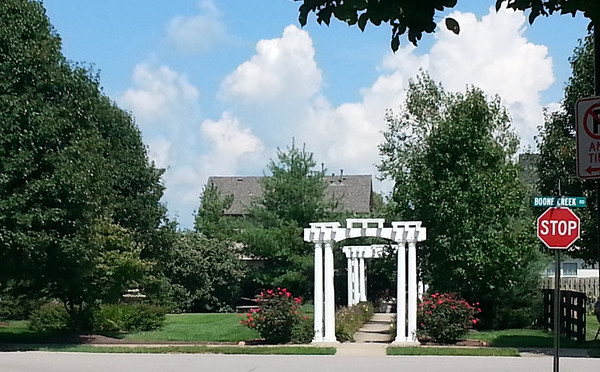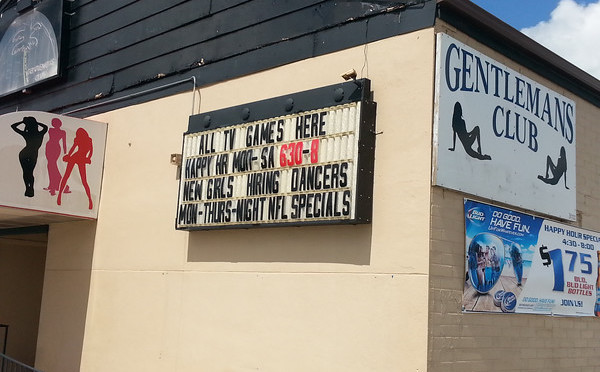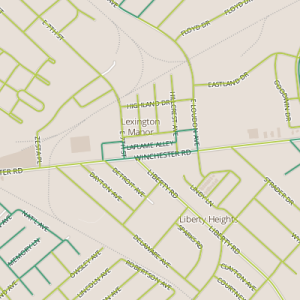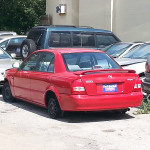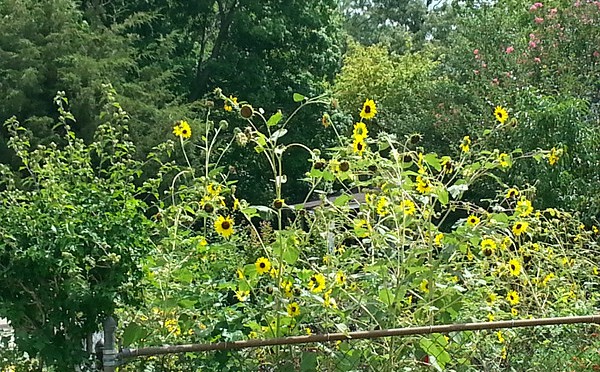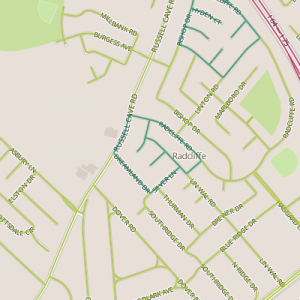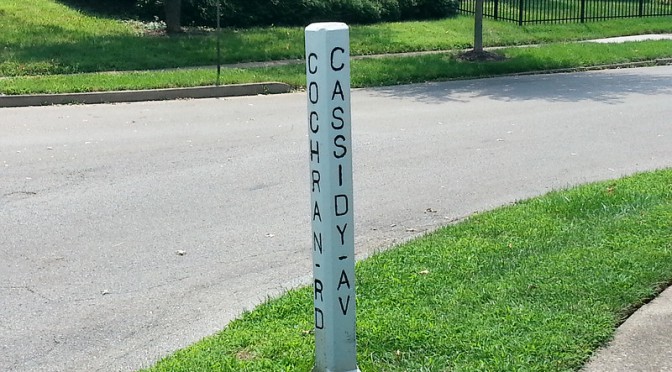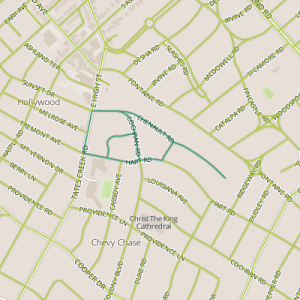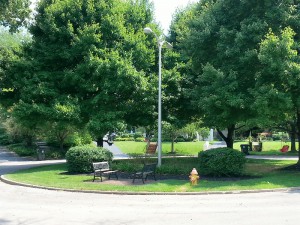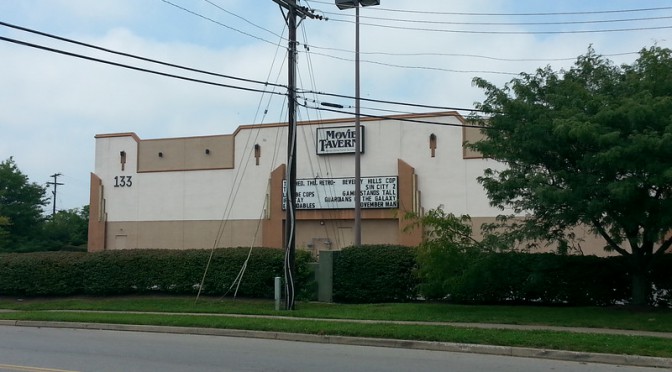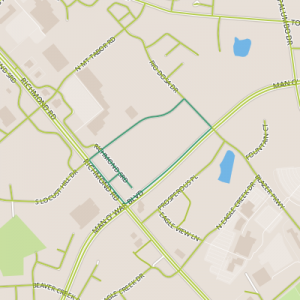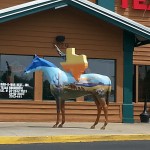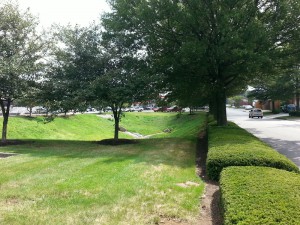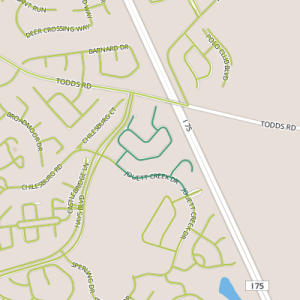 Today’s walk took me to the Chilesburg area along Hays Boulevard and close to Todd’s Road and I-75. This neighborhood as a whole is fairly new; new houses were under construction within view of the area through which I walked. The houses I passed were relatively old, but still built in the last 15 years or so.
Today’s walk took me to the Chilesburg area along Hays Boulevard and close to Todd’s Road and I-75. This neighborhood as a whole is fairly new; new houses were under construction within view of the area through which I walked. The houses I passed were relatively old, but still built in the last 15 years or so.
Newer neighborhoods have adopted some common design elements. While earlier neighborhoods were built on a trunk-and-branch philosophy, these areas typically feature a circle with branches. They often feature parklets, as this area does. They also seem to deal a little more thoughtfully with stormwater. Perhaps this is due to required environmental impact investigation? Streams are allowed to remain above ground and even in some cases landscaping around them (though I don’t know that we’ve reached a point where the landscaping is always suitable.)
What works: Trees work well to keep the highway sound down. Stormwater stream is an amenity.
What doesn’t: The narrow streets caused some problems when roofers and recycling pickup (trash trucks) competed for the same space.
